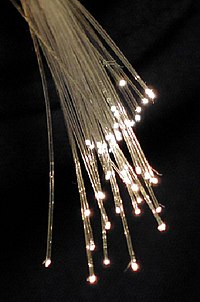
Photo from wikipedia
Cd1−xZnxO nanocrystallite films with doping concentrations varied from x = 0.00–0.90 were synthesized through a simple chemical route of the spray pyrolysis process using 0.05M precursor solution. The suitable optimized temperatures for… Click to show full abstract
Cd1−xZnxO nanocrystallite films with doping concentrations varied from x = 0.00–0.90 were synthesized through a simple chemical route of the spray pyrolysis process using 0.05M precursor solution. The suitable optimized temperatures for different compositions films were obtained by adjusting deposition temperatures from 693 to 723 K. It was found that structures, surface morphology, optical and electrical properties of the films can be altered by changing Zn contents in CdO deposits. The film composition from x = 0 to 0.50 have shown cubic phase with (1 1 1) prominent plane and the composition x = 0.90 shown wurtzite structure with (1 0 1) prominent plane. However, the composition varied from x = 0.60 to 0.80, in the deposits which showed mixed structure of cubic and wurtzite. The crystallite size, dislocation density and microstrain have been evaluated using XRD data. Scanning electron microscope images have shown different surface morphologies for different Zn doped CdO films. The absorption edge was found to be a blue shift with the increase of Zn content, confirming that there is an increase in the optical band gap. Other optical parameters such as extinction coefficient, Urbach energy, and optical conductivity have estimated using absorption spectra. All films show n-type conductivity, and it decreases with increasing Zn content due to decreasing carrier concentration.
Journal Title: Journal of Materials Science: Materials in Electronics
Year Published: 2018
Link to full text (if available)
Share on Social Media: Sign Up to like & get
recommendations!